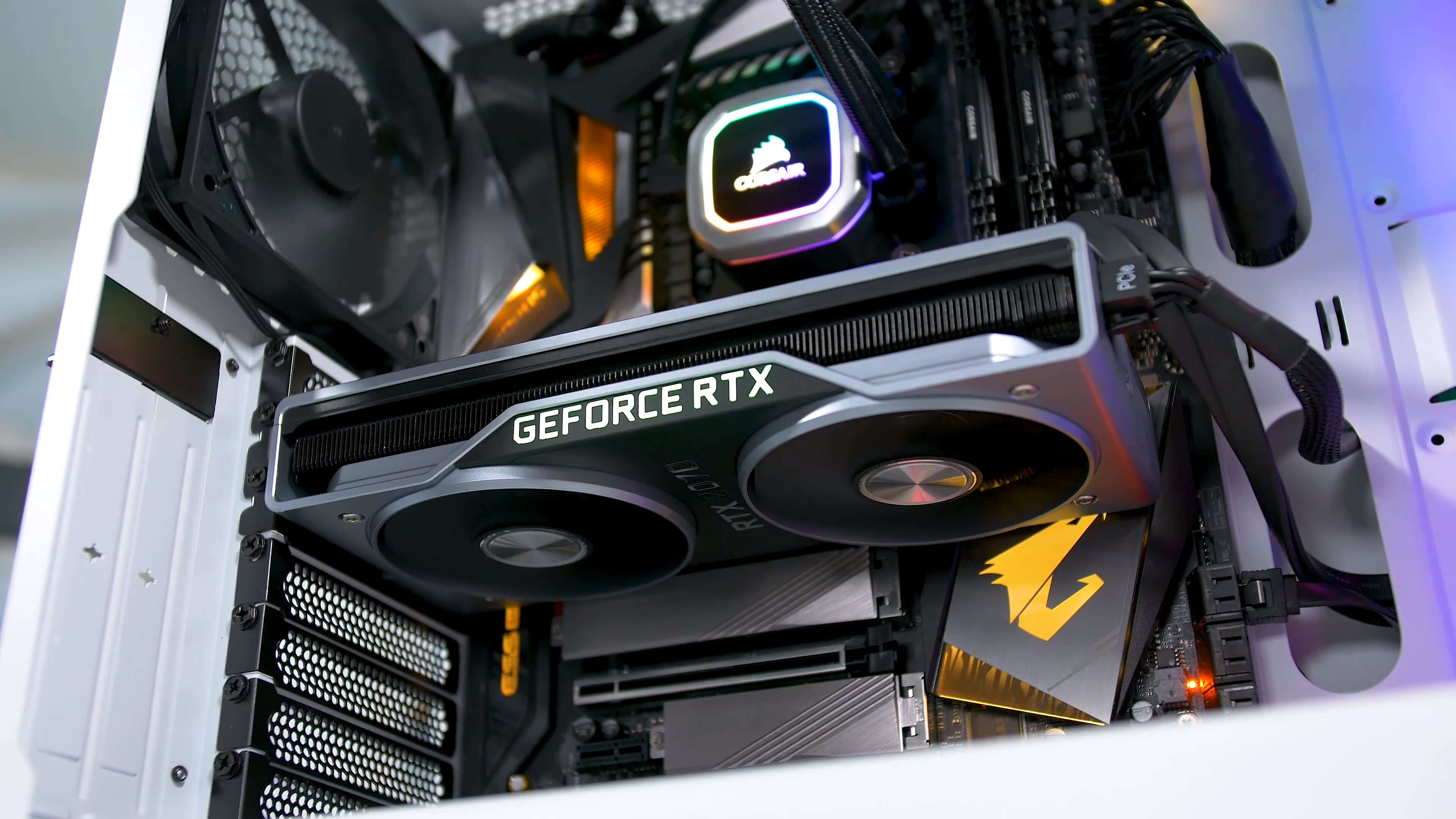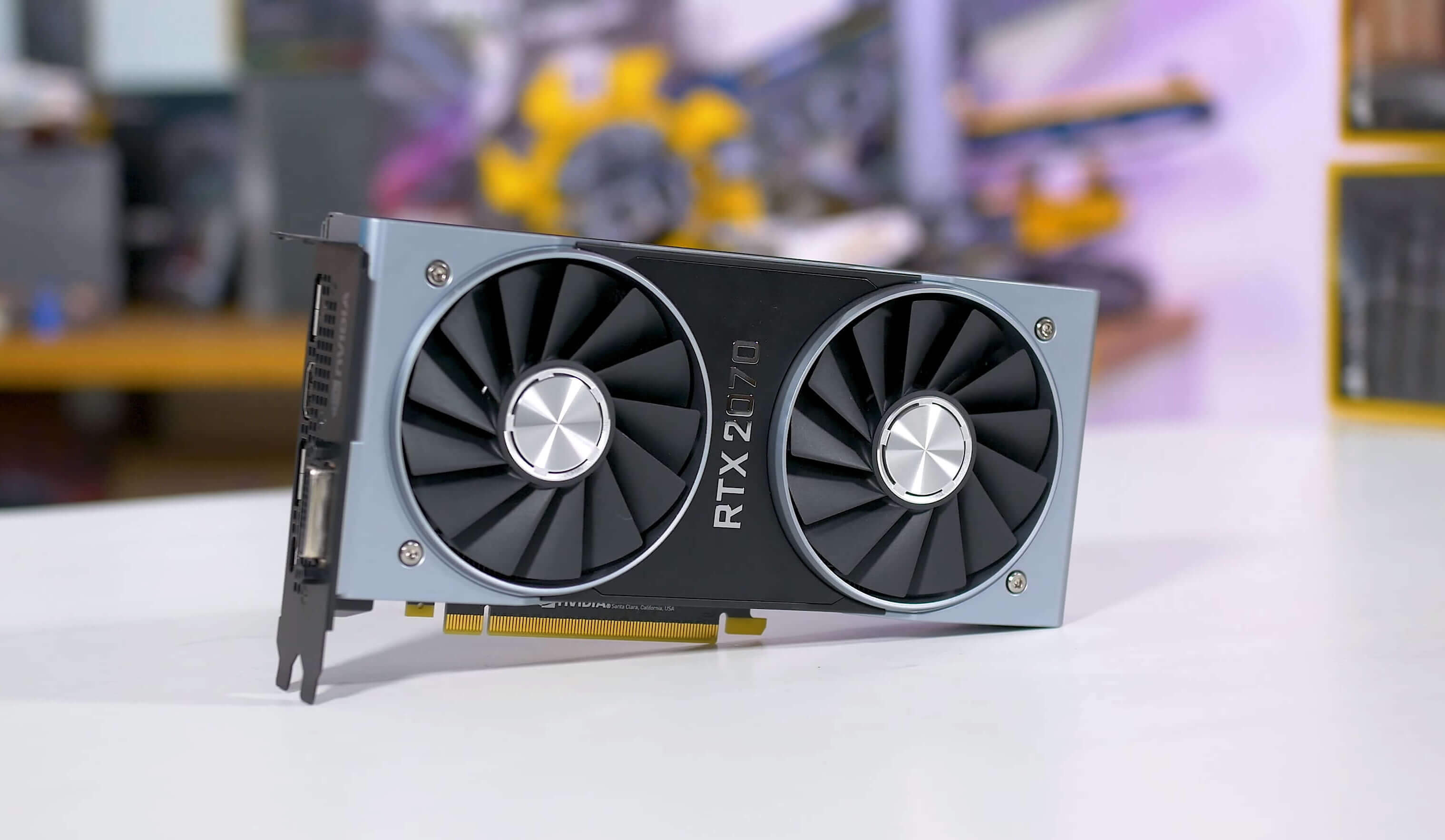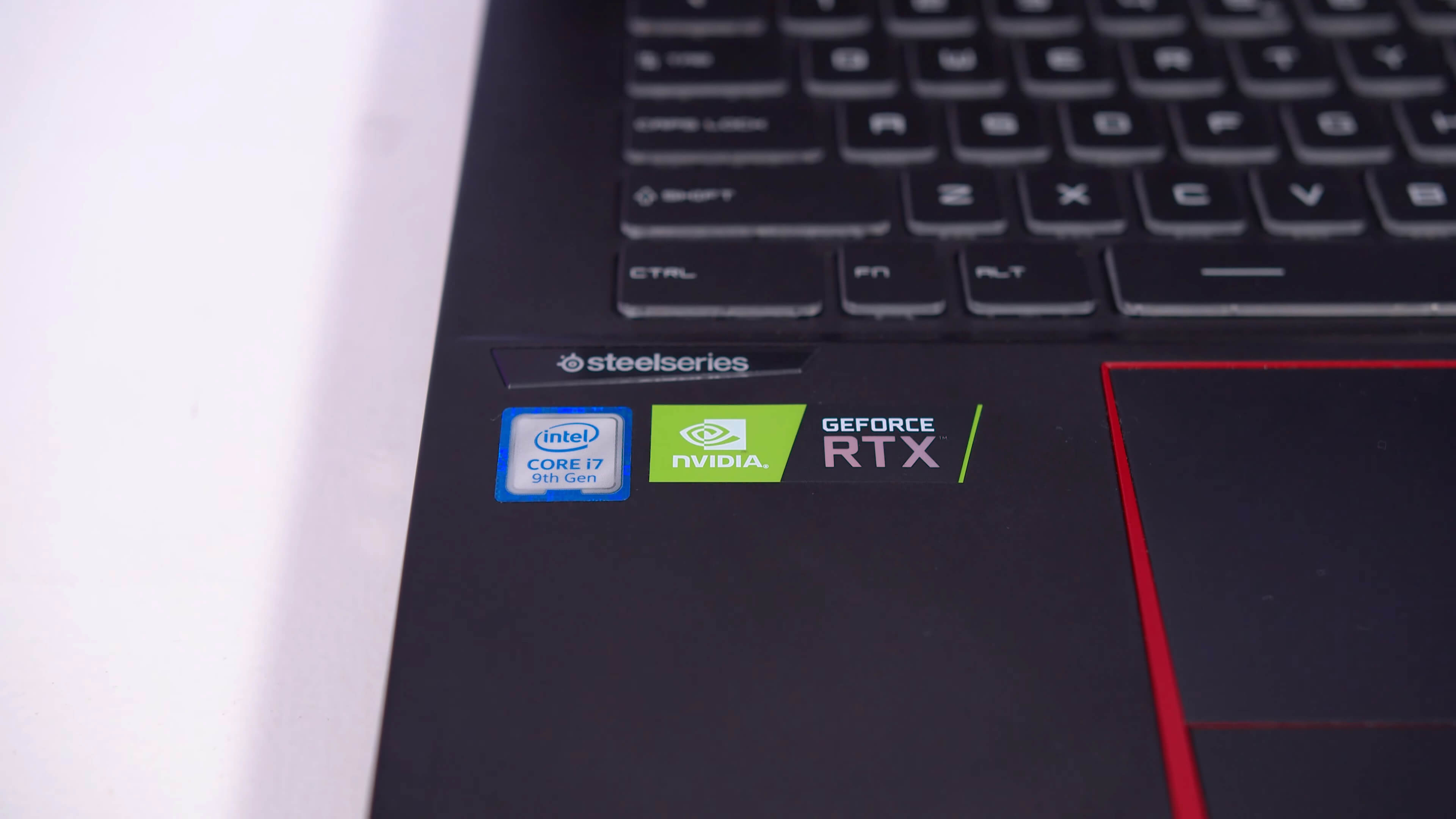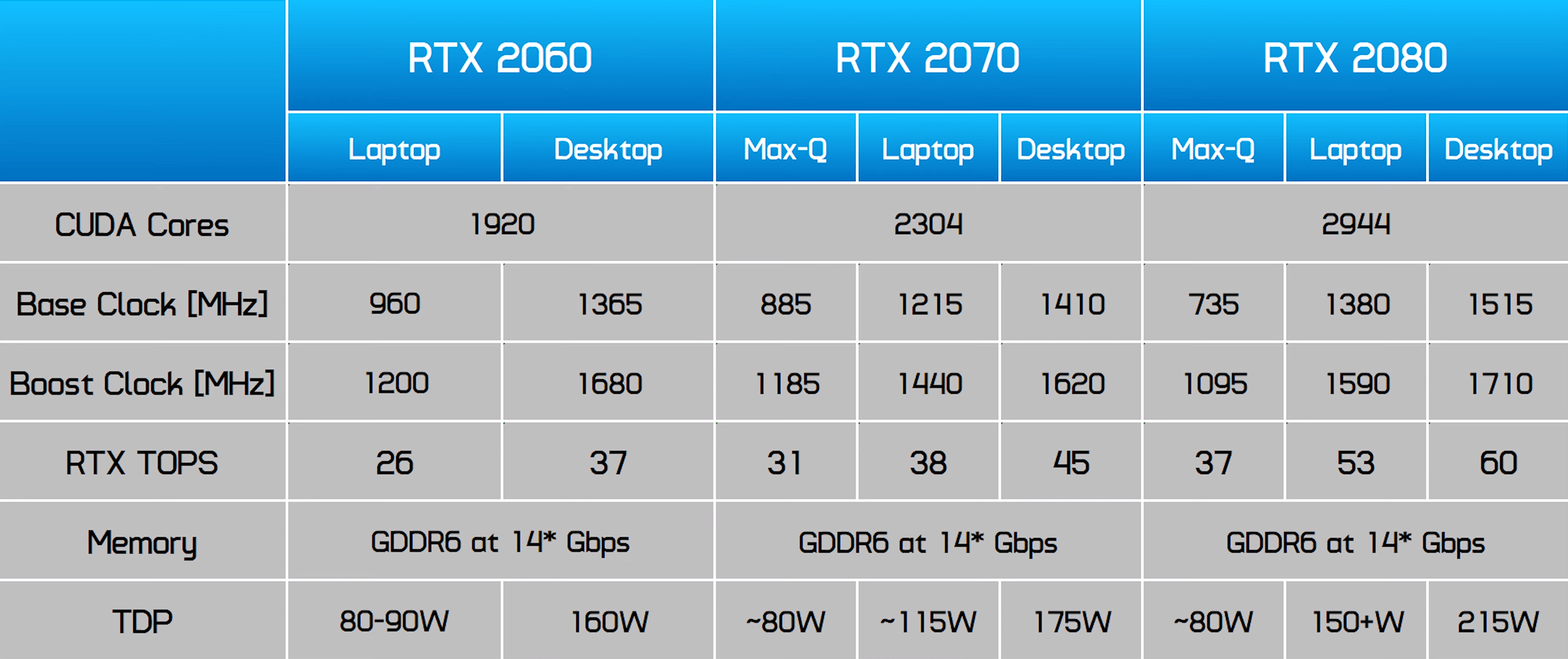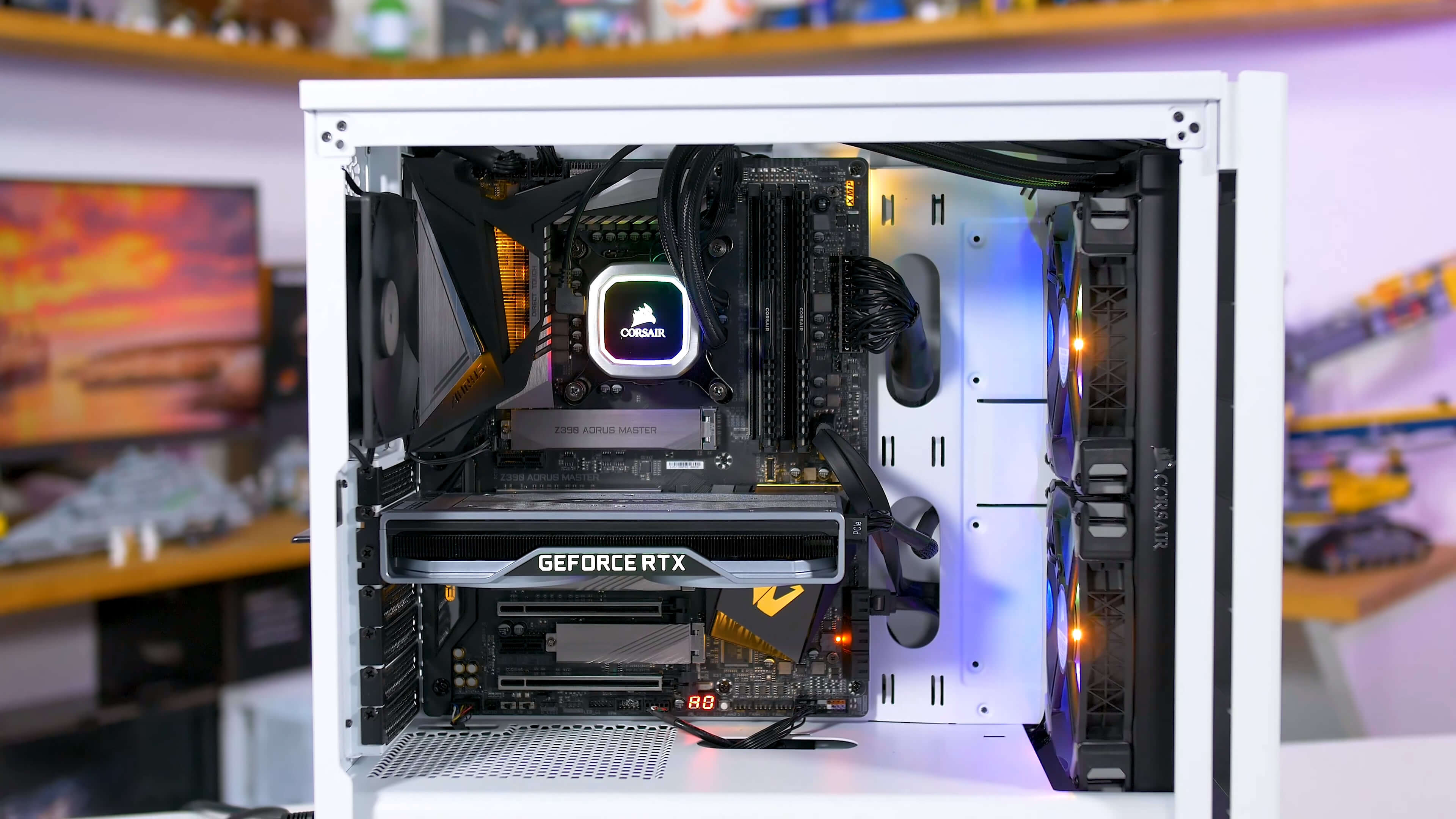Since the launch of Nvidia's RTX GPUs we've been intrigued about the performance difference between the laptop and desktop variants of the graphics chip. Unlike with previous generation Pascal GPUs, there is a gap in the specifications between GeForce 20 series products designed for power constrained laptops and GeForce 20 discrete GPUs aimed at fully-fledged gaming desktops.
Now the first thought that may come to mind is: why run this analysis? It is obvious that desktop PCs offer better performance and value, so do we really need to drop a great big turd on laptops? But that's not our intention.
Gaming laptops have earned their place in the market and that's not up for debate. The idea is to show laptop buyers exactly how their systems will differ to a typical gaming desktop, which we believe is especially relevant when Nvidia's naming scheme has muddied the waters a bit. So let's revisit the GeForce 20 series for laptops and focus on the RTX 2070 which is the chip we'll be benchmarking today. Despite using the exact same name on laptop and desktop, the RTX 2070 laptop variant is clocked lower. It has the same CUDA core count and same memory configuration, but the boost clock is 180 MHz lower. Straight away the desktop card is 13 percent faster in games that are shader limited, provided this clock behavior plays out in the real world.
Today's test is very simple: we've taken an RTX 2070 laptop and compared it to an RTX 2070 desktop in a range of games. We haven't attempted to make this a super apples-to-apples comparison where we lock down the desktop's hardware to directly compare the GPUs, because in reality there are many other factors that give performance advantages to desktops in real world scenarios, and that's what we're going for.
For example, laptops are limited to DDR4-2666 memory whereas most PC builders will be using at least DDR4-3000 considering it's roughly the same price. For our test that's the speed difference we're seeing, both with dual-channel 16GB kits.
But the bigger story is the CPU, most gaming laptops are limited to 45W CPUs and in 2019 will use the Core i7-9750H. This is a six core, twelve thread CPU that's rated at a 2.6 GHz base and 4.1 GHz all-core boost. However due to that power limit, the i7-9750H often sits in the mid 3 GHz range when fully utilized. In contrast, lots of desktop builders will choose something like the Core i7-8700K, which has a much higher 95W TDP and easily exceeds that on a regular basis. It's clocked at a 3.7 GHz base and boosts up to 4.3 GHz all-core, with typical behaviour seeing that CPU sit locked at 4.3 GHz in a multi-threaded workload. From what I've seen the 8700K is usually clocked 1 GHz higher or thereabouts.
We could have chosen something much closer to the Core i7-9750H on a desktop, like the 35W Core i7-8700T, but we thought it was more appropriate to use one of the most popular six-core, twelve-thread gaming CPUs in the i7-8700K. We could have also chosen to beef it up more with an eight-core Core i9-9900K, but for gamers the $370 8700K remains one of the better choices and we chose to stick to six core models, so we can see how a six-core laptop fares against a six-core desktop.
The laptop used for benchmarking is the MSI GE75 Raider 9SF which is equipped with a RTX 2070 GPU, Core i7-9750H, 16GB of DDR4-2666 and a 1080p display. The desktop was built using a RTX 2070 FE inside, plus a Core i7-8700K running stock and 16GB of DDR4-3000. We also tested with a 1080p display hooked up. And as a quick note, the Founders Edition RTX 2070 is clocked even higher against the laptop variant - 19% higher rather than 13% - but this the same clocks as many other factory OC cards that people buy.
Performance
Kicking the testing off with Metro Exodus and... it's not looking too bad for the gaming laptop. It is beaten by the RTX 2070 desktop, but only by 11 percent looking at average framerates and 14 percent looking at 1% lows. So despite the RTX 2070 desktop card having nearly a 20% clock speed advantage, the real world impact in Metro is somewhat limited which is nice to see.
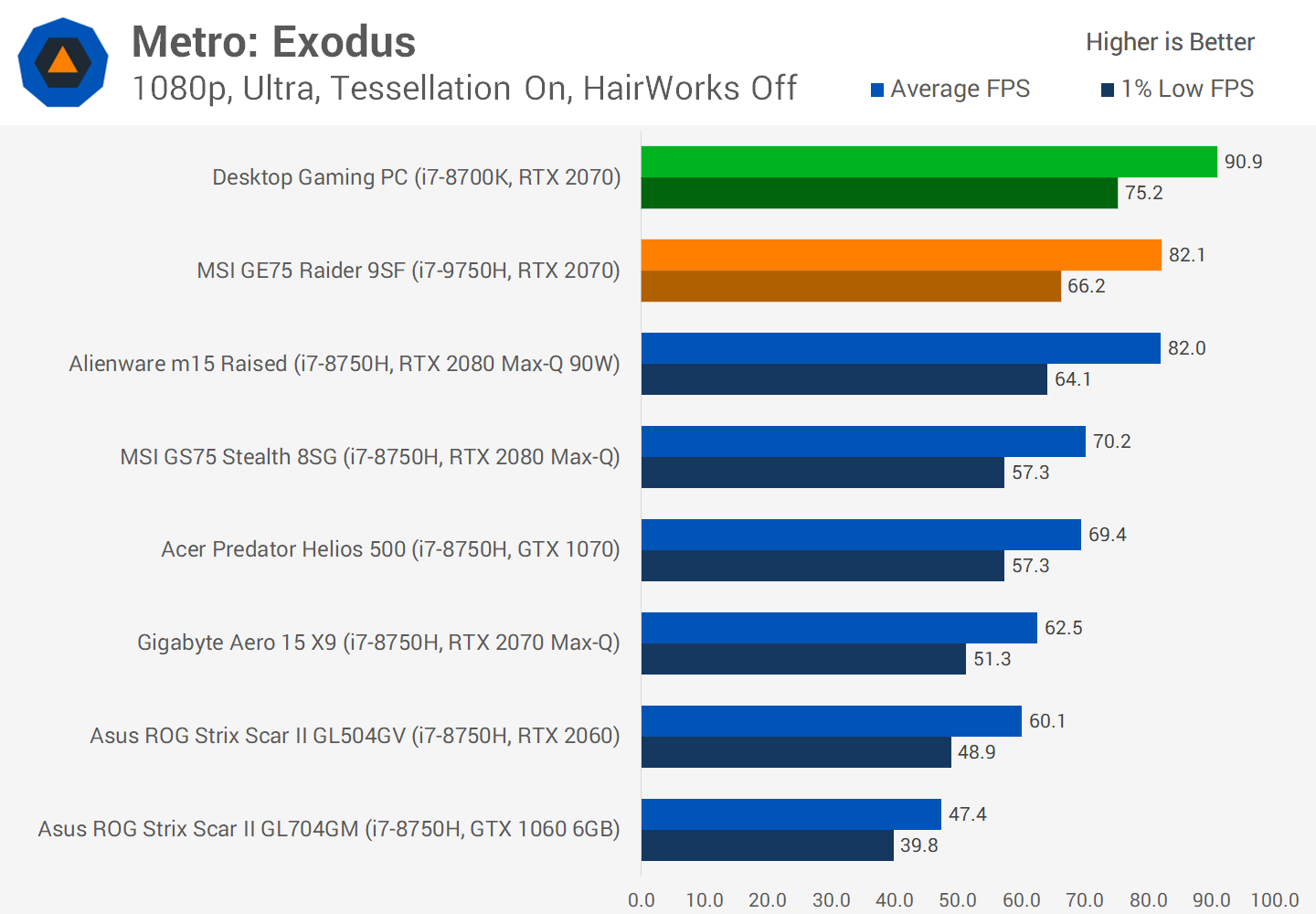
But things can also go in the complete opposite direction. In Resident Evil 2 the desktop RTX 2070 beats up on the laptop variant to the tune of 33 percent, which is a whopping margin. Given we are looking at frame rates well above 100 FPS here, we suspect this is a tag-team job with the faster 8700K also lending some assistance to remove CPU bottlenecks.
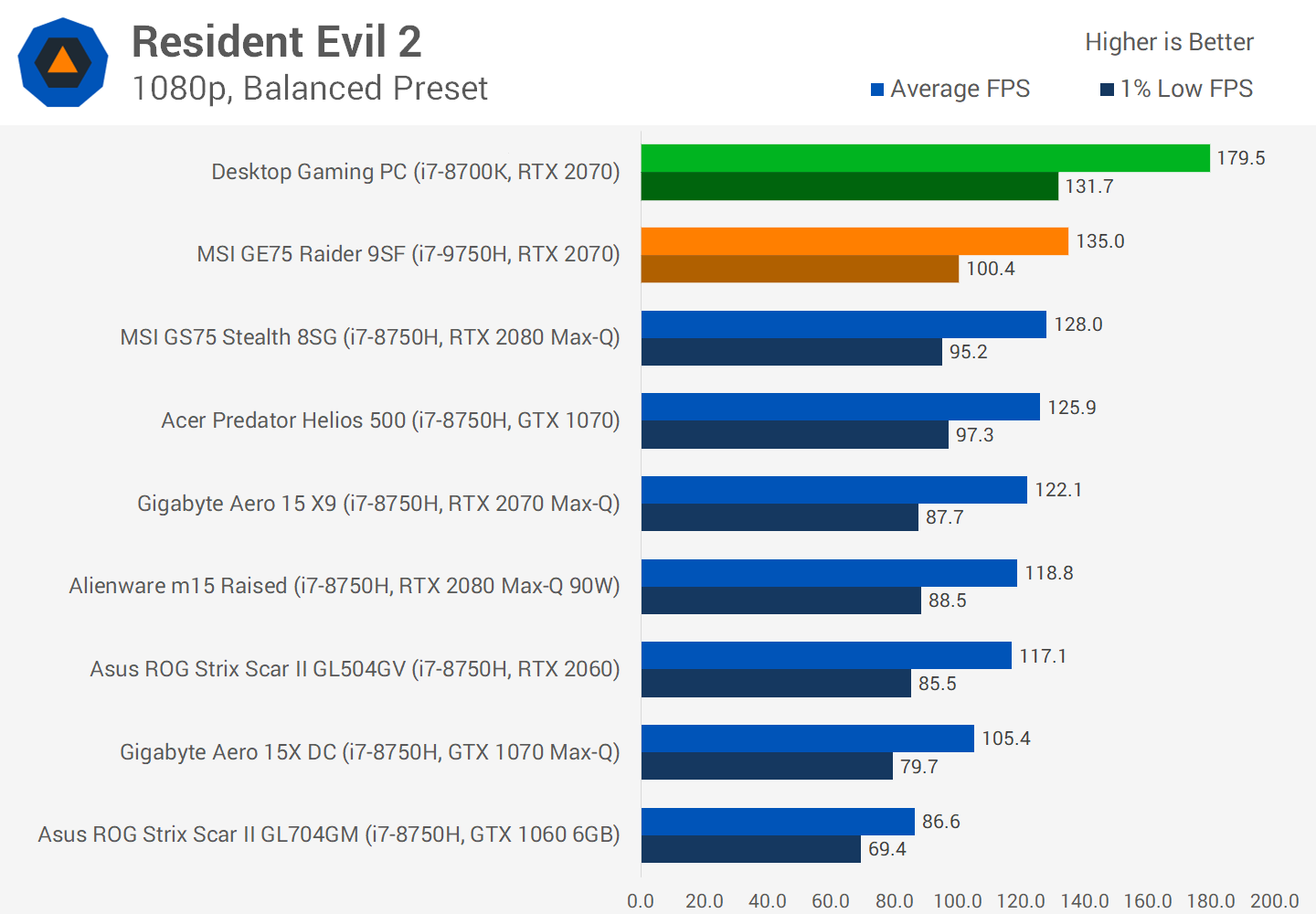
Hitman 2 is known to be a CPU demanding title and that plays out similarly to Resident Evil 2, delivering a huge 34% advantage to the desktop system, although this diminishes to only 22% when viewing 1% low performance.
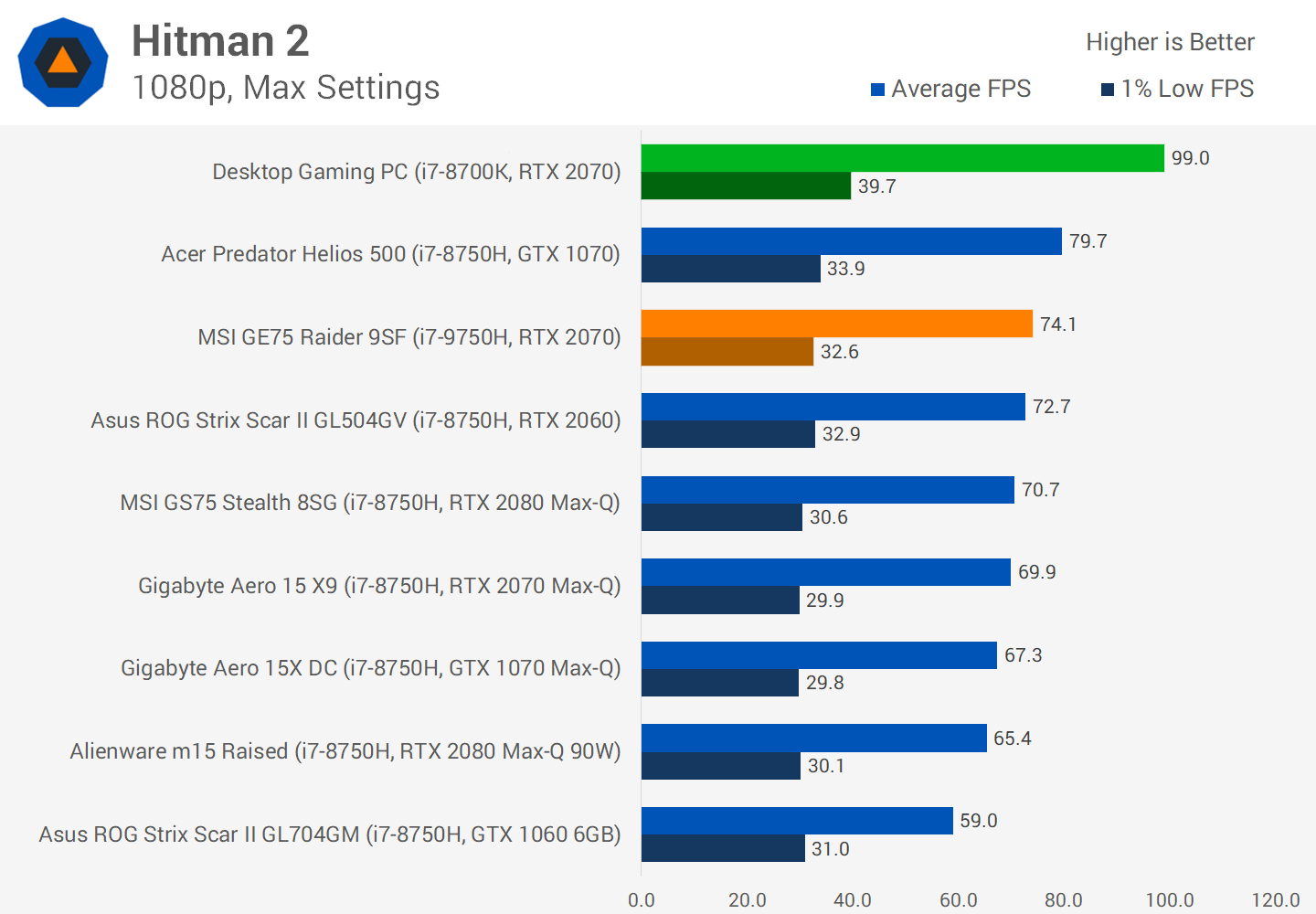
Battlefield V is an interesting situation. When looking at average performance we see the desktop pull ahead by a reasonable 12 percent, nothing that's going to make laptop owners cry. But in 1% low performance, it's clear the desktop is providing a smoother and more consistent experience with a 29% higher 1% low. Again, things like faster memory and a faster CPU help the desktop here significantly whereas laptops can feel a little stuttery at times.
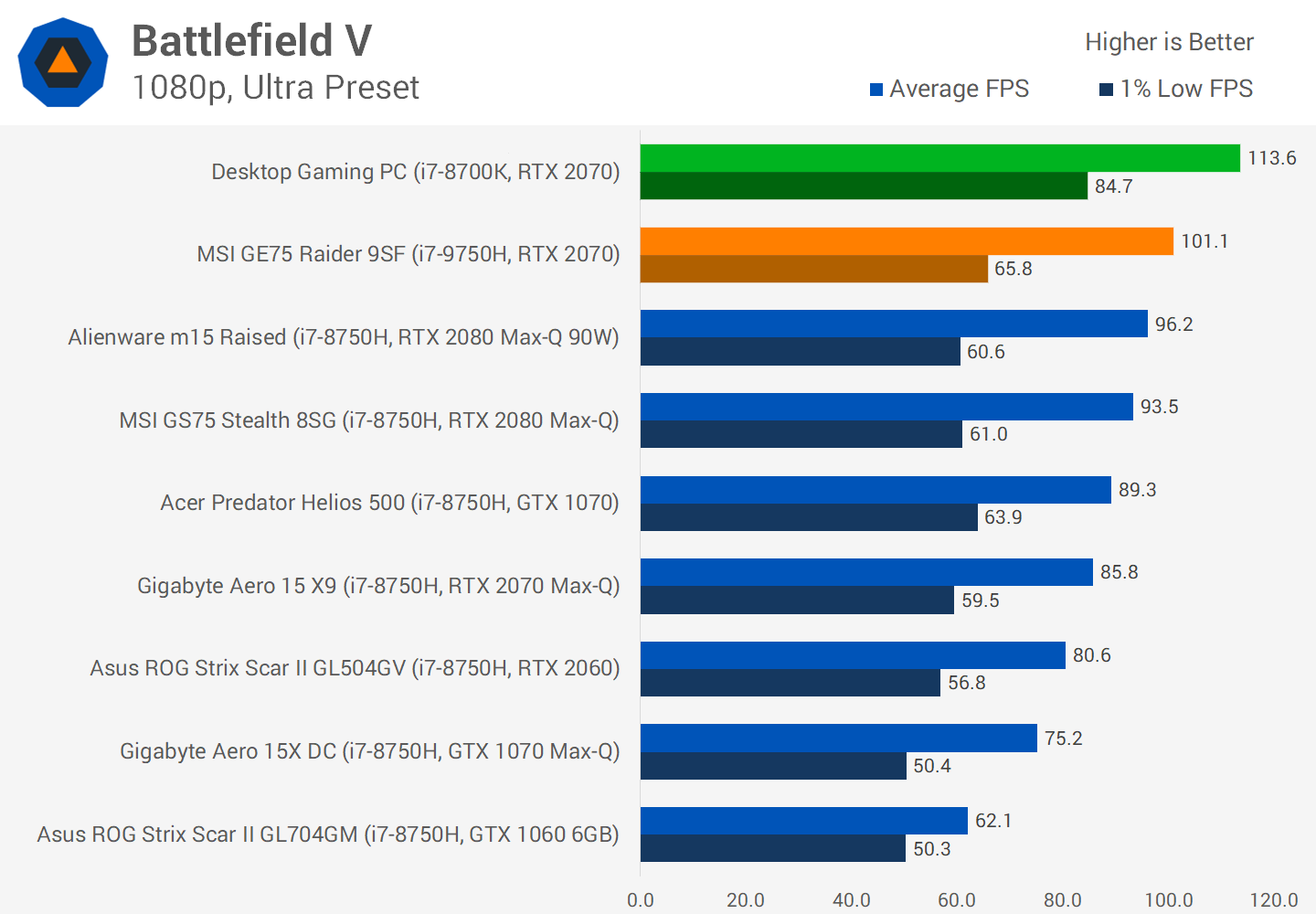
The Assassin's Creed Odyssey results surprised us a little bit because we know this can also be a very demanding title. However, the desktop is a mere 15 percent faster which doesn't seem too bad up against results like Hitman 2 or Resident Evil 2. There also isn't much difference in frame rate stability between the two systems.
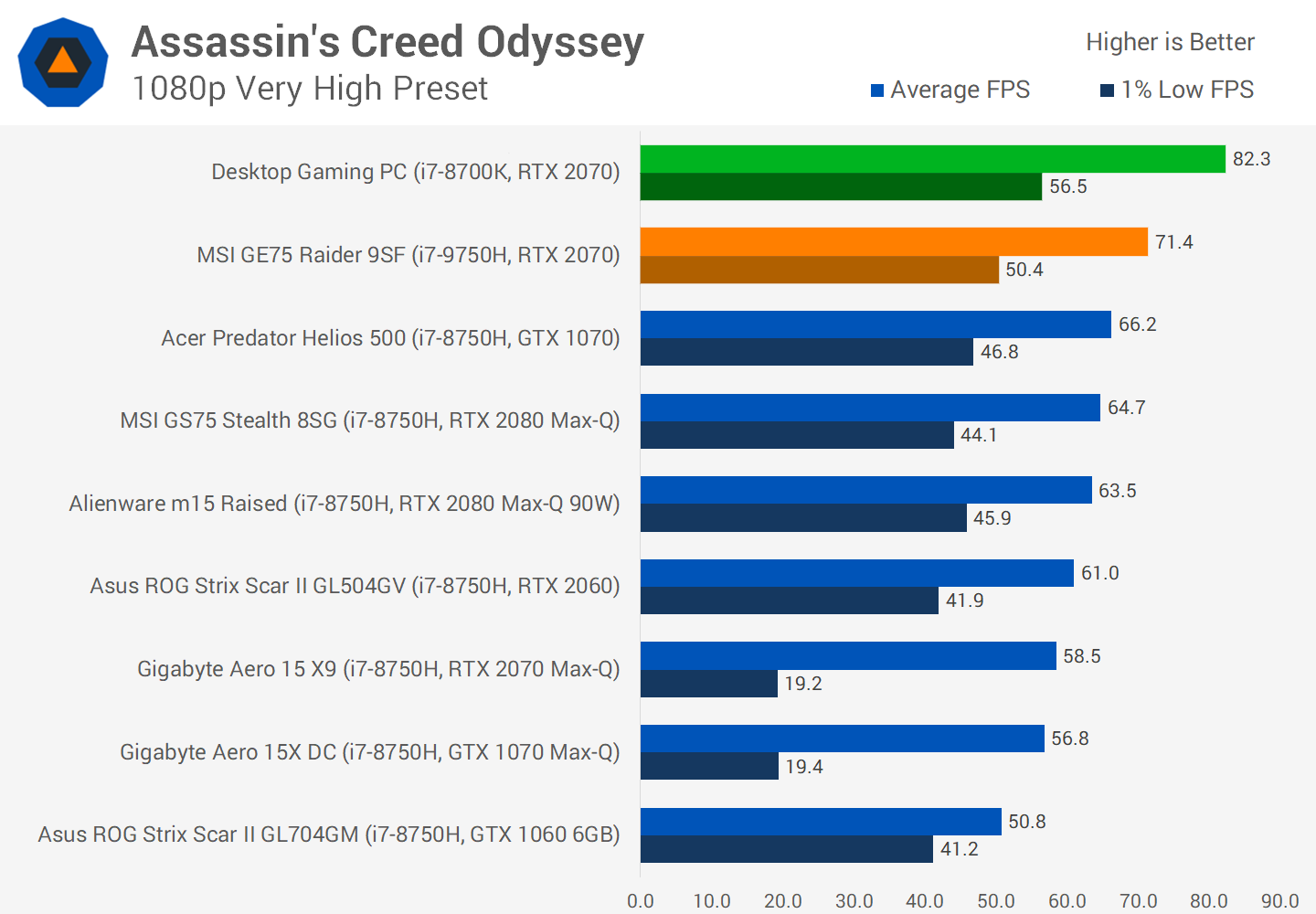
In Far Cry 5 we're back out to around that 19 percent margin with a 14 percent improvement to 1% lows in favor of the desktop system. So this is bang on the difference in clock speeds and fairly representative of the typical differences.
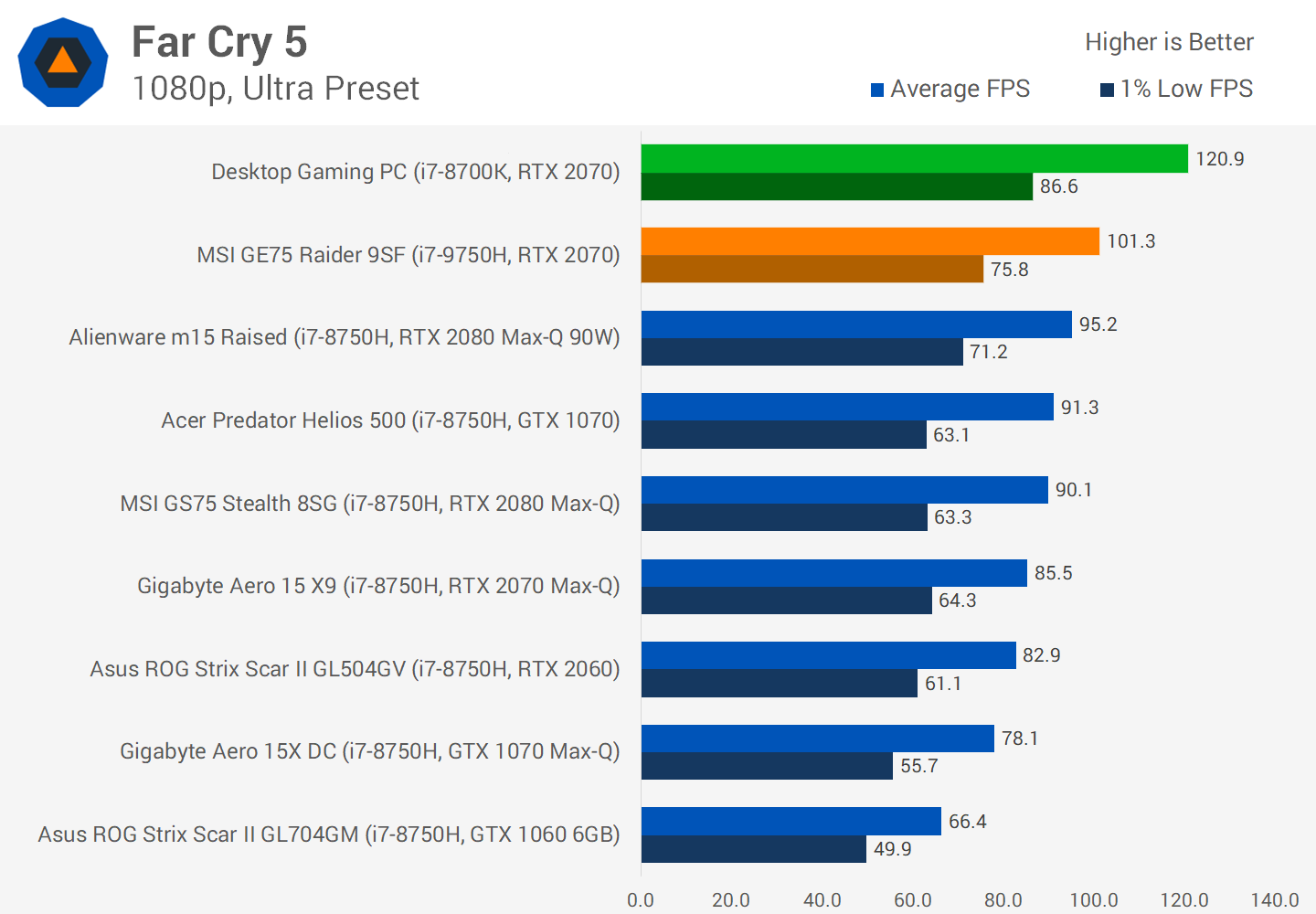
Star Wars Battlefront II like with Battlefield is another game that benefits from much better 1% low performance on the desktop. One percent lows are 25 percent higher here, compared to just a 16 higher average frame rate again in favor of the desktop system.
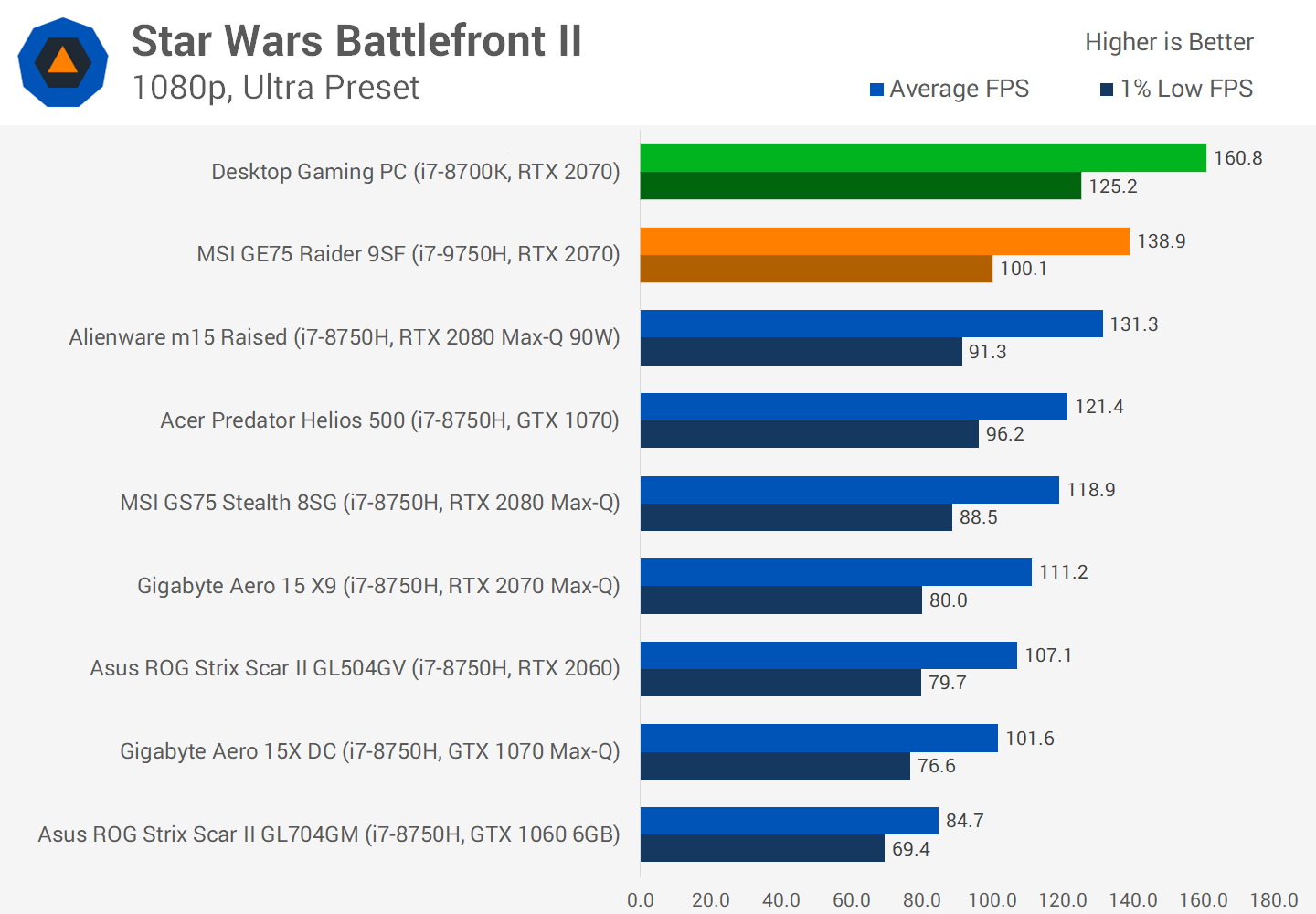
Watch Dogs 2 is another one of those games that tends to struggle on laptops due to its heavy GPU and CPU requirements. It's no surprise to see much higher gains to 1% lows than average framerates when comparing the two systems.
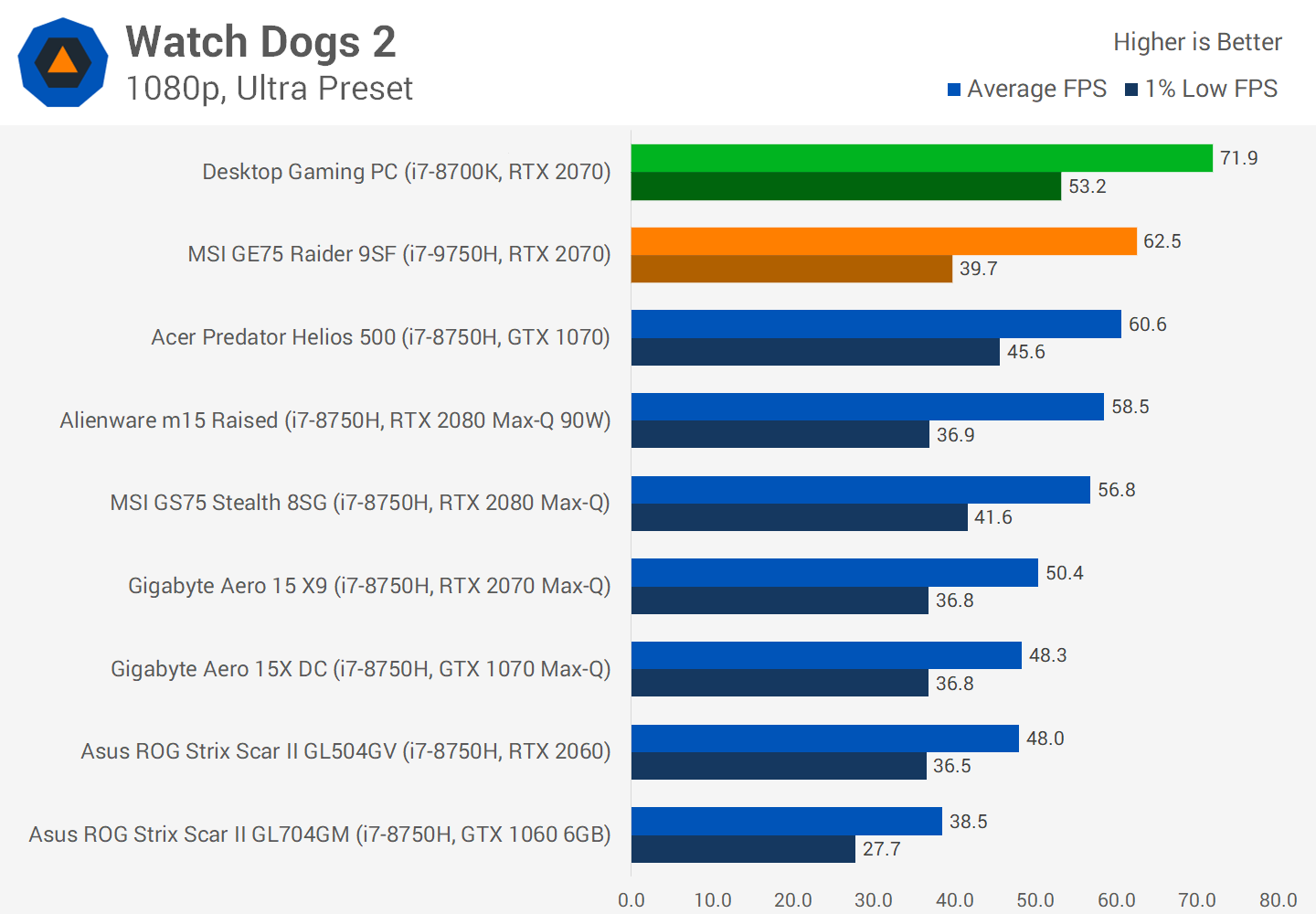
Shadow of the Tomb Raider is an interesting case and one of the worst for the laptop. The average frame rates are 32 percent higher on the desktop system, but the 1% lows are more than twice as high. The laptop has noticeable stuttering during some areas of the benchmark run, whereas the desktop does not. We benchmarked this set of data at least 10 times because we weren't convinced about these margins, but every time the desktop absolutely smoked the laptop.

Closing out with Grand Theft Auto V, the oldest title we tested but also a quite popular one still. The desktop RTX 2070 holds a 17 percent advantage in average frame rates but the damage to 1% lows is limited to just 10 percent which is one of the smallest differences we've seen so far.
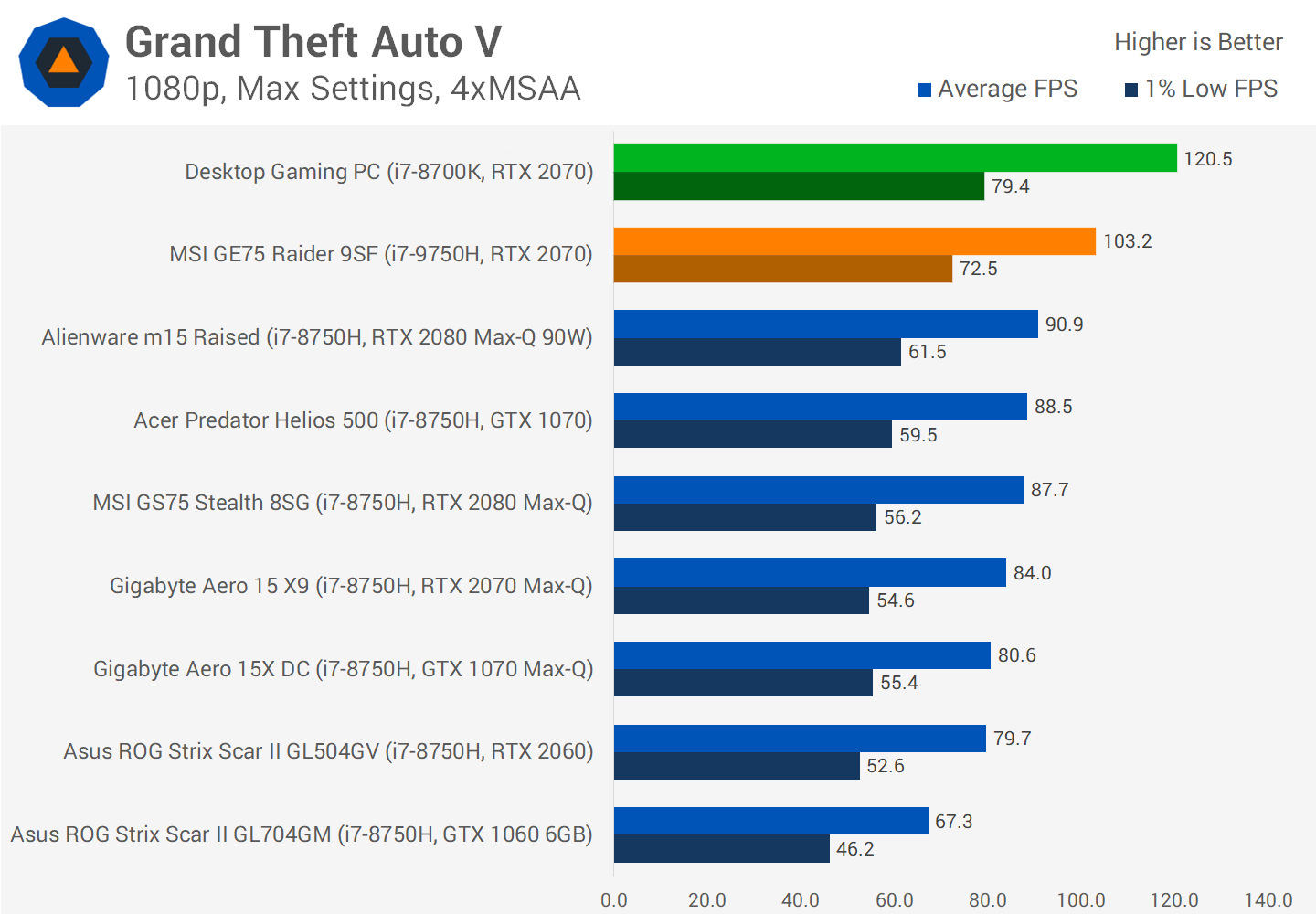
Performance Breakdown
RTX 2070 desktop vs. laptop GPU
Here is the full breakdown comparing the RTX 2070 in desktop vs. laptop across the games we just talked about plus a few extras thrown into the mix. When comparing average frame rates, we're left with the desktop clocking in 19 percent faster on average. Coincidentally, this is identical to the difference in clock speeds.
Now, we say coincidentally because when we get a 19 percent clock speed improvement on paper it's typical to see maybe a 15 to 16 percent real world performance gain. And as you can see, a lot of titles fall into that bracket consistently. However the average gain is boosted by a few outliers that benefit from the desktop PC's advantages in other areas like CPU performance.
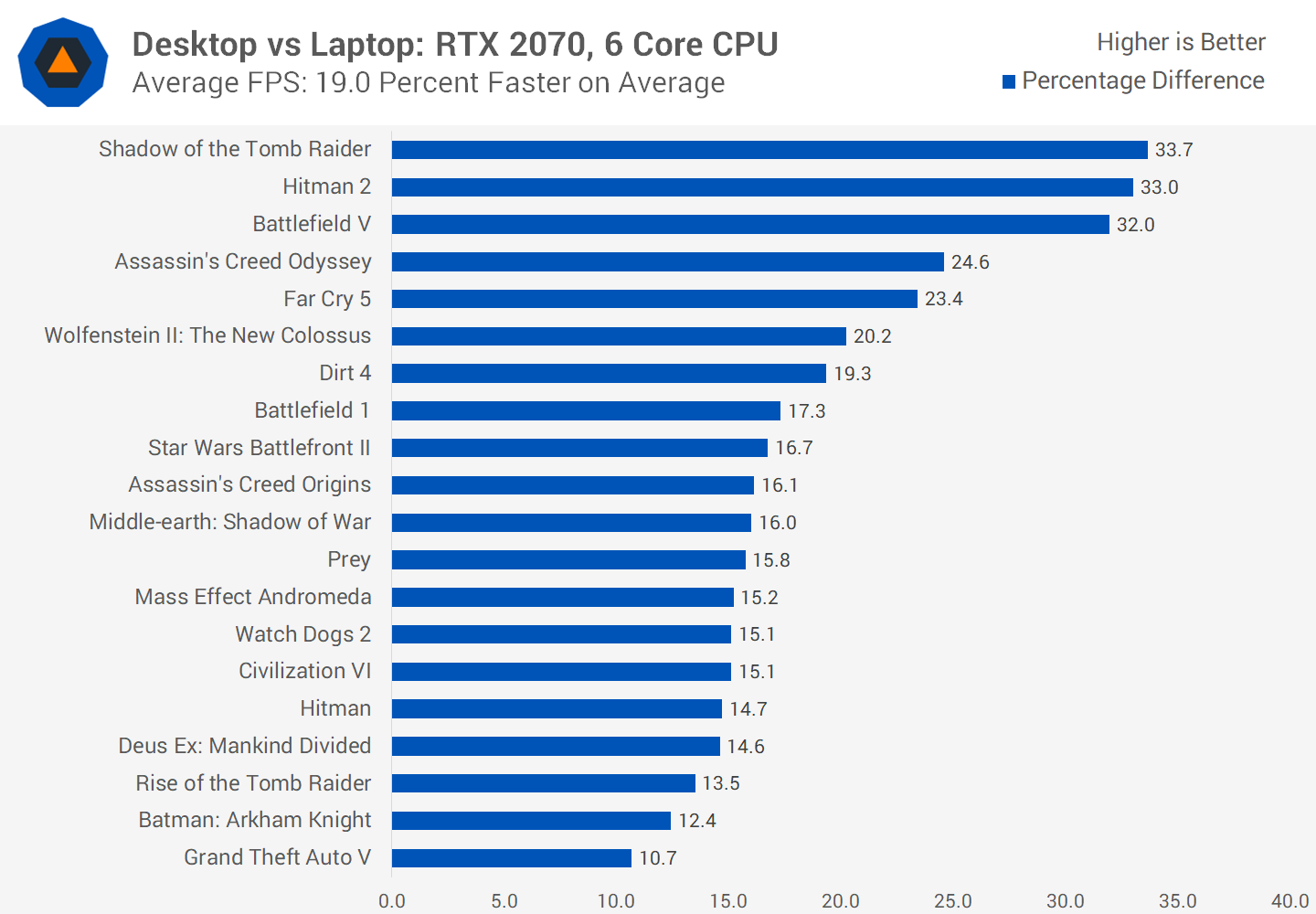
When comparing the 1% low performance things are all over the place. There are titles where the difference isn't large, around 11 to 13 percent in favor of the desktop. But then there are some significant outliers like Shadow of the Tomb Raider and Deus Ex Mankind Divided where the desktop is twice as fast in this crucial metric. An 1% low average of 34 percent with this sort of variance is not all that useful.
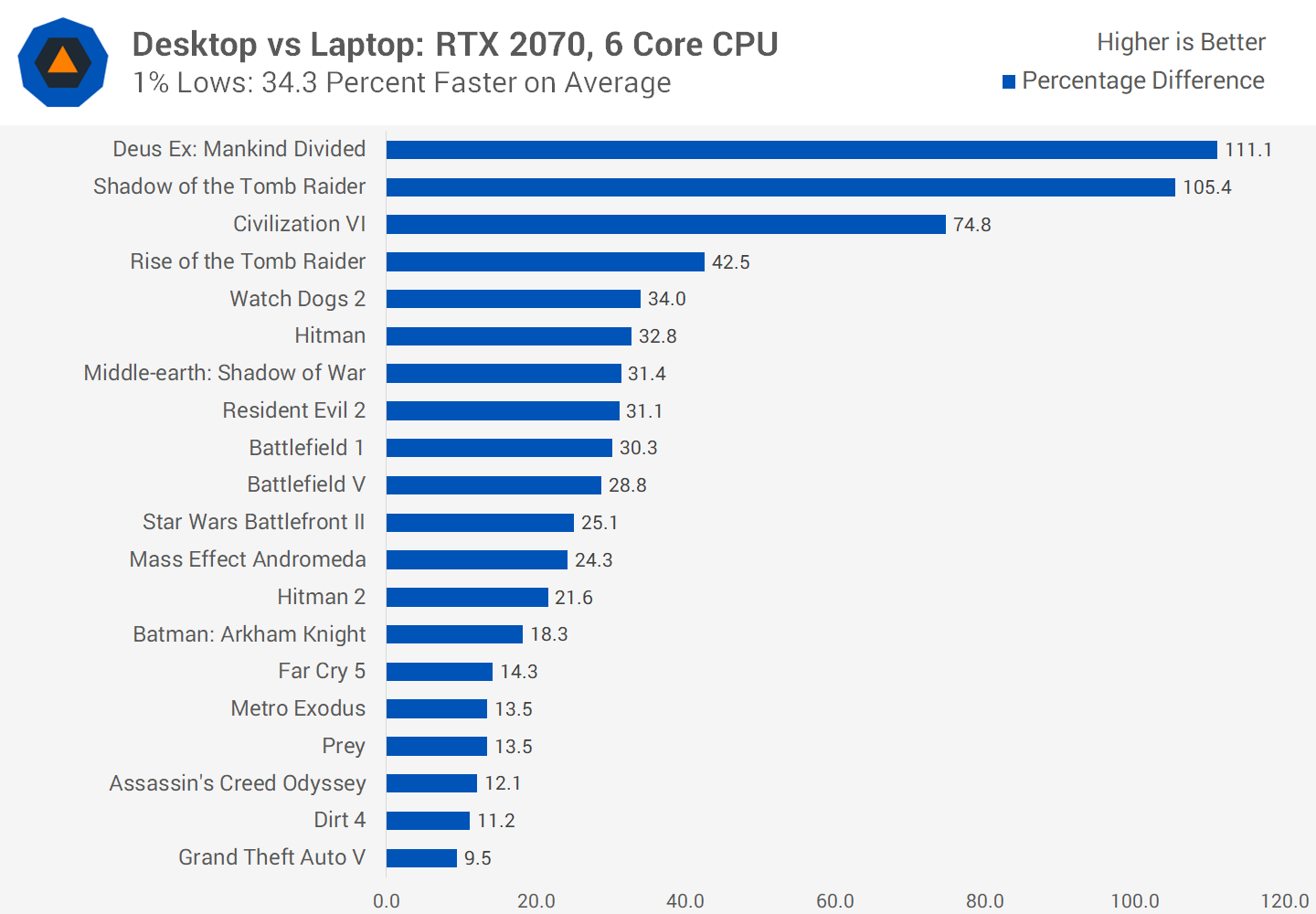
RTX 2070 desktop vs. RTX 2070 Max-Q laptop GPU
We haven't discussed Max-Q laptops thus far, although we have a dedicated review to it. We thought we'd throw this data in here as well for good measure. The Max-Q model is designed for even more power constrained systems, typically thin and light machines where cooling is limited, and thus is clocked considerably lower than the desktop and standard laptop variants. On average, the RTX 2070 for desktops is 42 percent faster. While this margin is enormous, at least the Max-Q model has a different name.
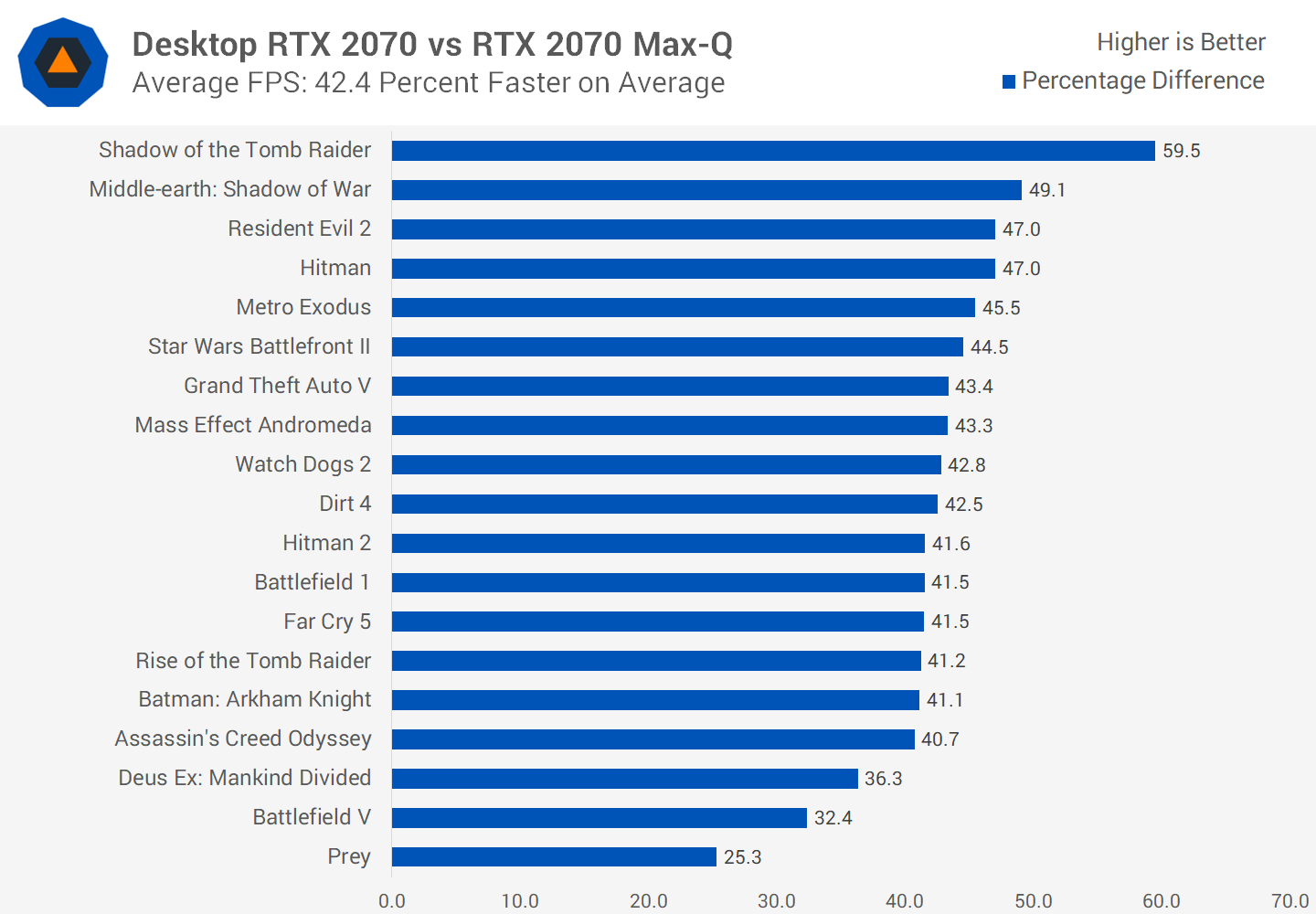
Closing Thoughts
In a nutshell, the desktop RTX 2070 was clocked 19 percent higher in our test configuration than the laptop RTX 2070 and performed 19 percent better on average. While GPU Boost does play around with clock speeds, there's not some magical wizard in the background boosting the laptop model up to the level of the desktop card. The difference in clock speeds on paper plays out in the real world.
While this is generally the case, there are also times where a desktop's other advantages assist with performance. A faster, less power constrained CPU helps with 1% low performance, as does faster memory, depending on where the bottlenecks lie. Better cooling capabilities allow the desktop to cope with a wider range of operating conditions without throttling. And, of course, the desktop has much higher scope for overclocking, which is typically limited or non-existent in laptops.
But all of those factors are known. If you put an 8700K in a desktop, it will perform better than the lower clocked i7-9750H. Of course, a much larger desktop has better cooling. But the everyday user and prospective laptop buyer might not realize that the RTX 2070 GPU in a laptop is not the same as the desktop counterpart, so you can't expect the same performance.
Aside from our complaints with the naming conventions of this GPU generation, the other aspect to consider when comparing desktops and laptops is value. Desktop PCs are not only faster, but usually cheaper, even when factoring in peripherals that are integrated into the laptop form factor.
The exact RTX 2070 test system we used costs around $1,700 to build, and then you can throw in a 1080p 144Hz display, mechanical keyboard and decent mouse for about $300 more and there you have a $2,000 system. MSI's GE75 Raider also costs $2,000, so at face value there's no difference in price, but a handy performance win to the desktop. However our test system does have a few overkill components that are designed for testing higher-end configurations. You don't really need a Z390 Aorus Master or H115i Platinum for a standard build. Swap a couple of these components out with more reasonable stuff, and the entire system price drops to $1,800. So you end up with marginal savings compared to the laptop and are left with better gaming performance.
That's not to say gaming laptops are pointless and in fact historically the comparison has been way more lopsided to the desktop's advantage. What we have today are very capable gaming machines that you can take with you, or ultrabook level machines that are good for work and play on the go. It's much easier to take around a laptop to various places, than it is to lug a desktop PC, monitor, keyboard and mouse. So what you sacrifice in performance and value, tends to go towards portability.
With that said, it's important to keep this trade-off in mind when tossing up between a desktop and a laptop. We've heard countless stories or know of people that keep their gaming laptops planted on their desk at all times, never take it around and even hook up external peripherals like perhaps a higher resolution display. These gamers shouldn't have bought a gaming laptop, instead should have gone down the desktop route. If you're not actively harnessing the portability aspect to gaming laptops, you're missing out on valuable performance and upgradability.
Shopping Shortcuts:
- MSI GE75 Raider on Amazon
- Intel Core i7-9750H laptops on Amazon
- Intel Core i7-8750H laptops on Amazon
- RTX 2070 Laptops on Amazon
- GTX 1070 Laptops on Amazon
- GeForce RTX 2060 on Amazon, Newegg
- GeForce RTX 2070 on Amazon, Newegg
- GeForce RTX 2080 on Amazon, Newegg
- Radeon RX 570 on Amazon, Newegg
- Radeon RX 580 on Amazon, Newegg
